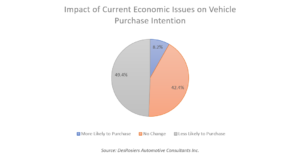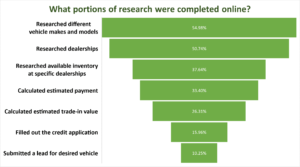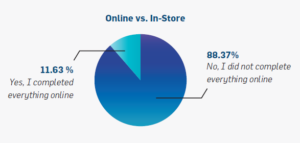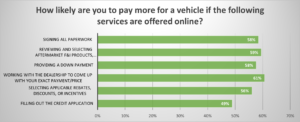The past 3 quarters of 2022 have been full of problems in the chip supplies and delays in production of vehicles and parts. The brands that will be able to succeed in this environment will be the ones dominating the market for new and used cars at the end of 2022 and beginning of 2023
This year has been unpredictable with significant year-over-year sales surges running back to back with disastrous quarterly declines across large swathes of the Canadian auto industry. Just look at the third-quarter for evidence: traditional Detroit vehicles enjoyed an 18-per-cent sales improvement compared with the same period in 2021, while Asian and European brands combined for a 28-per-cent nosedive.
We know that sales results in 2022 aren’t linked to demand, at least not in the traditional sense. Sales results — the real-world delivery of a vehicle to a customer — are driven by the ability to manufacture a vehicle. Or the lack thereof. And while the historic norm revolved around an automotive industry that built as many vehicles as possible, and incentivized to cope with any surplus, the automotive industry of 2022 is largely incapable of building enough vehicles to restore inventory at dealers.
The final list of Canada’s 10 best-selling vehicles during 2022’s first three-quarters is therefore very much a list that showcases which automakers are most-equipped to overcome a supply chain crisis. That doesn’t make it any less interesting than any other year, particularly given how much movement there’s been throughout much of the top 10.
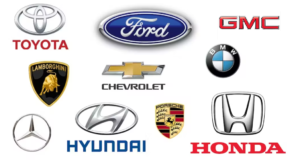 10. Ford Escape: down 5 per cent in sales
10. Ford Escape: down 5 per cent in sales
Marginally outpacing the Jeep Wrangler for the final slot in the top 10, the Ford Escape is three spots ahead of where it was at this time one year ago. Don’t thank Q3. As much as the Ford brand had an outstanding summer (up 12 per cent in a market that was down 12 per cent), the Escape’s third-quarter 25-per-cent drop was an outlier.
- Hyundai Elantra: down 1 per cent
The auto industry’s overall downturn, equal to 150,000 lost sales over the course of nine months, is nothing compared to the relatively tiny passenger car market’s loss of nearly 60,000 units. Cars account for only 18 per cent of the market, but they make up 39 per cent of the lost sales. Yet the Hyundai Elantra has essentially no part in all that. Elantra volume is steady at just over 2,200 units per month, on average, virtually on par with 2021 levels. The Elantra ranked 14th overall at this stage of 2021.
- Honda CR-V: down 45 per cent
Bearing the brunt not only of an industry-wide shortfall of parts but also the production complications of a generational changeover, the Honda CR-V is shedding volume at a nearly unbelievable rate. Through the first nine months of 2021, Honda Canada had already reported 42,944 sales. Presently switching from the fifth to the sixth-generation CR-V, Honda is tracking toward its lowest-volume CR-V sales year since 2011.
- Honda Civic: down 27 per cent
The Honda Civic has been Canada’s best-selling car in each of the last 24 years, but 2022’s outcome seems sorely in doubt. The Civic trails its traditional second fiddle by 2,621 units. The Civic was trailing at this stage of 2021, as well, but not by so significant a measure. Down 27 per cent this year, the Civic is emblematic of Honda’s overall predicament: brand-wide volume is down 32 per cent this year.
- Toyota Corolla: down 21 per cent
On track to end 2022 as Canada’s best-selling passenger car for the first time ever, the Toyota Corolla is still on track to slow at the same precipitous rate as the car market overall. Fewer than one out of every five new vehicles sold in Canada are cars. Granted, the Corolla and Honda Civic account for one out of every four passenger cars sold this year.
- GMC Sierra: down 9 per cent
Don’t let rising fuel prices stand in your way — pickup trucks are in control in Canada. Even the GMC Sierra, down 9 per cent through 2022’s first nine months, isn’t shedding sales as quickly as the industry at large. Indeed, third-quarter Sierra volume jumped 20 percent, a part of GM’s overall 28-per-cent uptick.
- Chevrolet Silverado: up 1 per cent
Adding up Chevrolet’s total Silverado volume doesn’t exactly portray GM’s overall impact on Canada’s full-size pickup truck market. Combined, the Silverado and its GMC Sierra twin produced 80,849 sales during 2022’s first three-quarters, very nearly enough to catch Canada’s No.1 vehicle. But not quite.
- Toyota RAV4: down 20 per cent
Narrowly holding onto a podium position after a third-quarter in which sales slid only 7 per cent, the Toyota RAV4 is a sure bet to finish 2022 as Canada’s best-selling SUV for a seventh consecutive year. The RAV4 actually outsold its top direct rival, the Honda CR-V, by more than two-to-one over the course of the summer.
- Ram Pick Up: up 4 per cent
With 25 per cent of all full-size pickup sales in Canada, Ram’s truck line has grown its market share by nearly two points compared with the first nine months of 2021. To be fair, Ram has no hope of catching the top truck, besides the fact that GM’s truck twins easily outsell the Ram, as well. But in a market that’s suffered huge declines in 2022, Ram’s Stellantis parent company isn’t going to be disappointed with a 4-per-cent year-over-year increase in volume.
- Ford F-Series: down 5 per cent
After a third-quarter in which Ford boosted F-Series sales by 16 per cent compared with 2021, this lead is locked in. It would take a small miracle for Ford’s rivals to sell 84,000 trucks in 2022, let alone enough vehicles to match Ford’s year-end total that will surely top 100,000 units for an 11th consecutive year. No other vehicle line in Canadian history has ever hit six digits.
Cain, T. (2022, October 26). Canada’s 10 best-selling vehicles in 2022’s first three-quarters | driving. Driving. Retrieved November 2, 2022, from https://driving.ca/column/driving-by-numbers/canadas-10-best-selling-vehicles-end-2022s-q3



